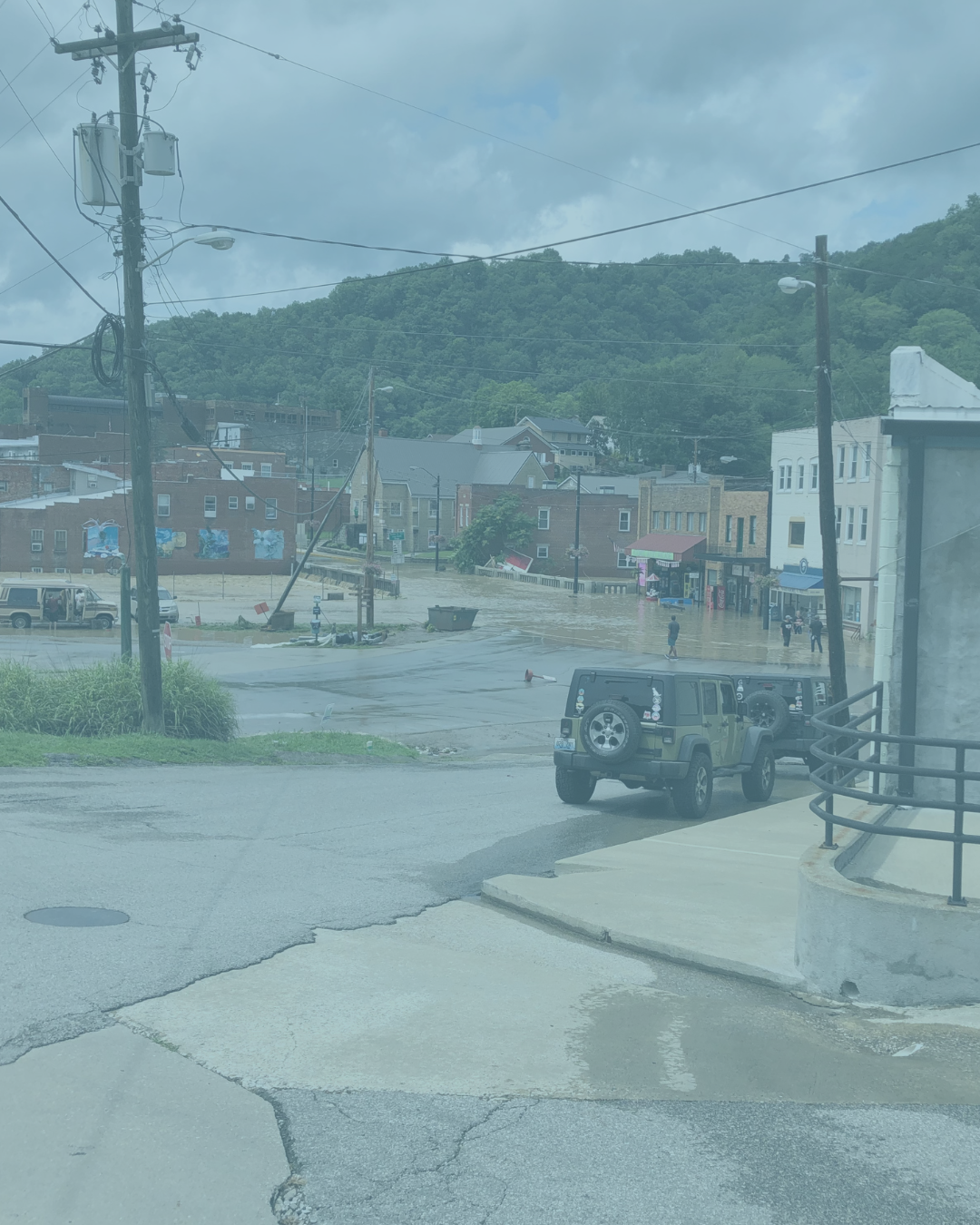
Appalachia Can’t Wait
Flooding disasters continue to devastate our region. We’re advocating for a more resilient future for all who call Appalachia home.
The mission of the Appalachian Flood Resilience Coalition is to connect organizations across Appalachia committed to building a more flood resilient region.
Our coalition drives regional collaboration and advocacy in support of policy change and investment needed to create a resilient Appalachia.
We work to uplift evidence-based information and policies that are also grounded in the lived experience of Appalachian communities, particularly those impacted by and recovering from flooding, with a focus on federal policy advocacy.
The Coalition is a resource for affiliated groups to share information, coordinate efforts, and maximize impact in service of our vision.
Our Mission

The Problem
As the climate changes, rainfall events in Appalachia will increase in frequency and intensity. The American Communities Project has stated that "Appalachia is ground zero for rainfall," while the risk of increasingly extreme rainfall is particularly high for Kentucky, West Virginia, and Ohio. Extreme weather events are likely to occur much more frequently over the coming years.
This is not a futuristic scenario, but is being felt here today. Over the last decade (2013-2023), there have been nearly 20 federally-declared flooding disasters across Kentucky, Ohio, Pennsylvania, Tennessee, Virginia, and West Virginia. Total FEMA spending on these events totals nearly $1 billion and at least 230 lives have been lost due to flash flooding.
Our Steering Committee - About Us
Learn about our history and our steering committee.
Pillar I
Increase local and state capacity to respond and recover
Pillar II
Relieve the recovery and mitigation burden for low-income households
Pillar III
Improve flood mapping and data inputs
Pillar IV
Invest in nature-based hazard mitigation
Our Platform
Read our platform and recommendations for a resilient Appalachia.





